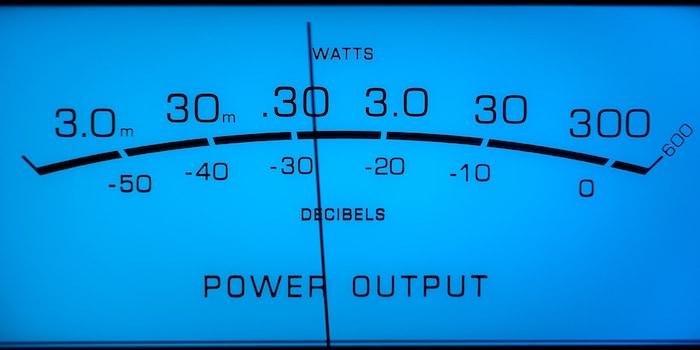
Why watts alone don't tell the whole story
When it comes to hi-fi, few values are more associated with nonsense, half-truths and other scams than performance expressed solely in terms of watts. After all, the volume and quality of your favourite music have nothing to do with the flashy figures in brochures or boring technical data sheets. Let's take a quick tour through the maze of watts and sound volumes.
Websites, leaflets and other vendors proudly promote their 100 watt speakers. Once you've acquired some knowledge of the subject, you'll know that this figure doesn't mean much, at least not if it applies to an ordinary hi-fi speaker, and especially if it's supposed to translate the volume of music you'll be able to listen to in your living room.
The watt is the physical unit that expresses power. However, in 90% of cases, hi-fi speakers are passive loudspeakers. They therefore deliver no power. They simply transmit or consume the 'juice' coming from the amplifier or the final amplifier stage. Information like "100 watts per channel" is certainly already closer to reality, but the number of watts in an amplifier has little to do with what comes out of your speakers either.
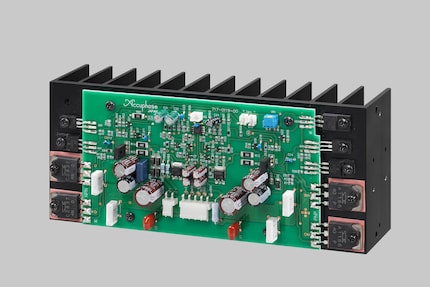
The interaction between speakers and amplifier
The volume of your music depends on the interaction between the speaker and the amplifier. Some active loudspeakers have final amplifier stages - often even several for low frequencies, mids and highs - but don't conclude from this that they are perfectly matched and that protection circuits protect all components. Active loudspeakers are still the exception in high-fidelity. They are very common in computers (small desktop speakers) and on Bluetooth-enabled devices (portable mini-speakers). The sound that comes out of them is generally a far cry from that of recording studios.
I'm talking about standard hi-fi equipment here, meaning the relationship between the amplifier/final amplifier stage and the loudspeaker. It is more complex than watts and, above all, these figures have little to do with the volume we can achieve while preserving our ears and our devices.
It's the efficiency of the loudspeaker that's decisive. It indicates what sound is obtained from the watts supplied by the amplifier. One speaker will probably only need a few watts to produce a kick drum hit that will make your guts vibrate, while another will require 1000 watts or even more.
The power consumption of loudspeakers varies enormously depending on their construction, components and circuitry. Efficiency expressed as a percentage indicates the amount of current transmitted by the amplifier and transformed by the loudspeaker into audible sound waves. But beware: most electrodynamic loudspeakers have an efficiency of 3% to 5%. The poor amplifier therefore wastes a large part of its power. The excess heats up the loudspeaker components.
These indications rarely appear in prospectuses. Serious manufacturers, on the other hand, carry out measurements in standard rooms. They calculate the sound pressure in decibels (dB) that a loudspeaker produces at a power of 1 watt, measured at a distance of one metre. The result is expressed in dB/W/m. I'll give you more advice on decibels and sound dynamics in a later article.
The cause and effect
When a loudspeaker has a good efficiency, it produces a higher volume of sound than a loudspeaker with a low efficiency. 78 dB/W/m is a very low value, 94 dB/W/m a very high value. This is equivalent to 10 dB plus a doubling of the subjectively perceived volume. And each electroacoustic transducer requires ten times as much electric current. So if a loudspeaker has an efficiency of 80 dB/W/m, it already needs 10 watts to reach 90 dB on hi-fi equipment, 100 watts for a level of 100 dB and 1000 watts for peaks. In my example below, the low-efficiency loudspeaker needs around 26 times more power to produce the same volume of sound. In concrete terms, the loudspeaker with the correct efficiency requires just 4 watts for 100 dB, while the other needs 106 watts. You see, watts expressed alone don't say much.
So why are passive speaker watts still provided without further guidance? This is partly explained by the history of HiFi. In acoustic engineering, loudspeaker resistance was a decisive factor (sometimes still is today). It indicates the power that an amplifier can send to the loudspeaker without exceeding a certain level of distortion or without overheating the loudspeaker or its tweeter. It depends on duration, nominal load, peaks, pulses and musical load capacity. Nowadays, resistance is just a theoretical value, because chassis are much more solid. Although it may sound strange, low-power amplifiers do far more damage to a loudspeaker than more muscular amplifiers.
The risks
What, weaker amplifiers do more damage to a loudspeaker than their more powerful versions? But what do you mean? They tend to produce clipping (big distortions) when overdriven, which is far more dangerous to tweeters than a slight overdose of power. 10 watts of distorted sound is much worse than 100 watts of normal sound.
In fact, it's a question of amplifier stability. Electrical power is the product of voltage and current. A loudspeaker never provides a constant value of electrical resistance to a final amplifier stage. The more the resistance drops, the more current the final amplifier stage has to supply in order to maintain power. Added to this are other unpleasant phenomena such as phase rotation. In short, it's complicated.
Just as loudspeakers have a resistance threshold, final amplifier stages have a power threshold. In conventional transistor amplifiers, distortions increase and quickly exceed this threshold. This is known as clipping. This phenomenon can destroy tweeters in a fraction of a second. The more room for manoeuvre you have, the lower the risk for the loudspeakers. The situation is a little different for tube amplifiers. They tolerate distortion better, but they are less powerful.
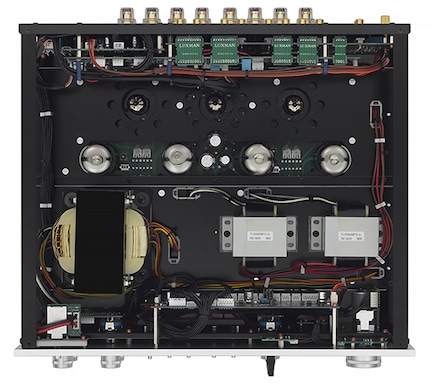
Switching amplifiers, often mistakenly referred to as 'digital amplifiers', are all the rage at the moment. These recent devices are being used more and more in the high-fidelity field. They are very powerful and produce fewer losses than transistor amplifiers, and even fewer than tube amplifiers. Their losses manifest themselves in the form of high heat production. But most modern quality amplifiers have protection circuits that protect them from overheating and preventing them from destroying the loudspeakers.
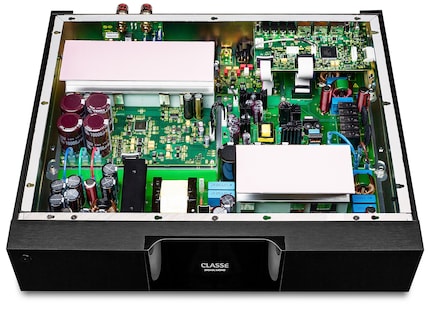
The power of an amplifier (the product of voltage and current) depends on many factors. 'x watts at x ohms' is not as accurate as some claim, but it still better reflects the complex relationship between loudspeaker and amplifier.
Stability is a particularly important criterion. It describes the ability of a final amplifier stage to deliver current to loudspeakers, even if they are very "difficult". In more precise terms, it refers to the maintenance of a given voltage at very low resistances of less than 2 ohms or during phase rotations of up to 60 degrees due to an inductive or capacitive load between the voltage and current of the loudspeakers or frequency dividers. The stability of the load depends above all on the design and dimensions of the power supply and the stability of the current coming from the transistors or final tubes. Excellent quality amplifier stages may well produce 40 volts continuously at a resistance of 2 ohms and a phase rotation of 60 degrees.
The HiFi dedicated magazine "Audio" has created a stability diagram often falsely described as a "die". It shows the stability of a final amplifier stage in three dimensions: the higher and flatter the measurement level, the more powerful and stable the amplifier. But this data does not tell us anything about sound quality. In fact, weak tube amplifiers can sound better on high-output loudspeakers than power monsters on normal loudspeakers.
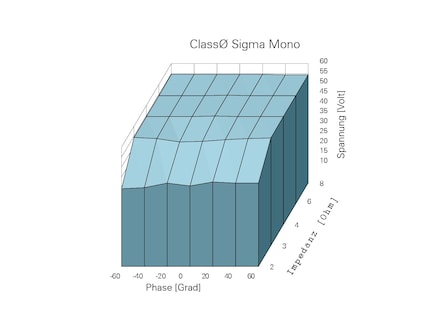
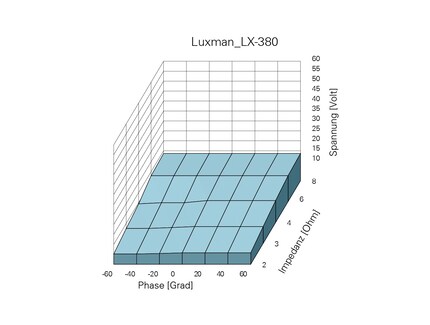
How many watts do you need
Some general rules apply despite the complex relationship between loudspeakers and final amplifier stages.
- If you're happy with a slightly higher volume than normal, the wattage of standard loudspeakers and amplifiers is irrelevant to you.
- If you want to push the sound from time to time, start by buying yourself a stable, powerful amplifier. Consumer magazines will be able to help you make your choice, as they are based on serious measurements. If you can't get these figures, look at the leaflets, which will give you some clues. Make sure that the power given at 4 ohms, or even 2 ohms, is higher than that at 8 ohms, as this is a sign of stability. It's better to have 100 than 10 watts, but there's no difference between 160 and 150 watts.
- Do you like a well-saturated sound, but your budget isn't unlimited? Check the unit's output. Here too, testing can help. Failing that, make sure it has at least 90 dB/W/m.
The best advice I can give you is to test your device. Watts will give you no indication of sound quality.
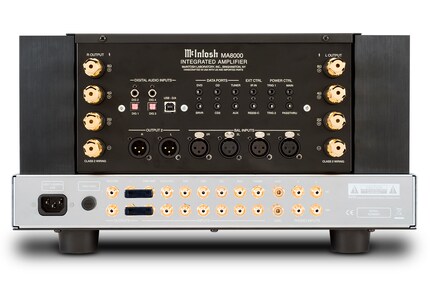
Some examples
Amplifiers powerful enough to push the sound: [[productlist:6399954]]
Tube amplifiers [[productlist:3487655]]
Switching amplifiers [[productlist:5710421]]
I have been a journalist in the audio industry for over 30 years. I have a reputation as an avid music lover, a die-hard analog fan and an uncompromising critic of speakers. This surely has something to do with my lamentable attempts to play violin and drums beyond amateur status. For a while I lived and worked in Switzerland, my favorite country, where I love to return.
Interesting facts about products, behind-the-scenes looks at manufacturers and deep-dives on interesting people.
Show all